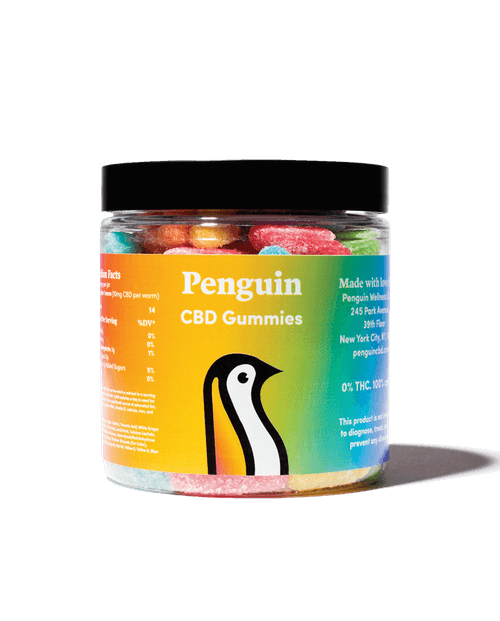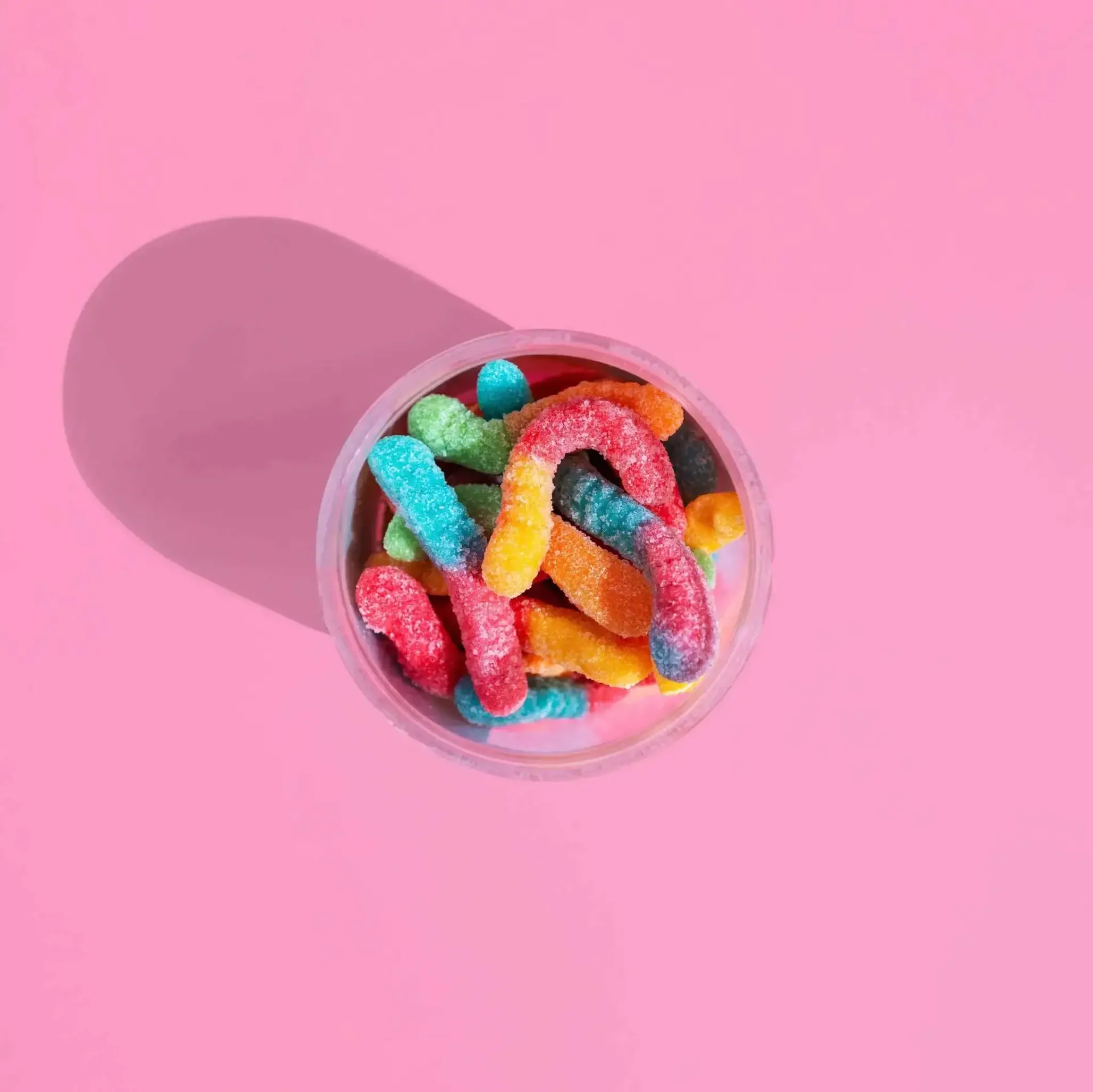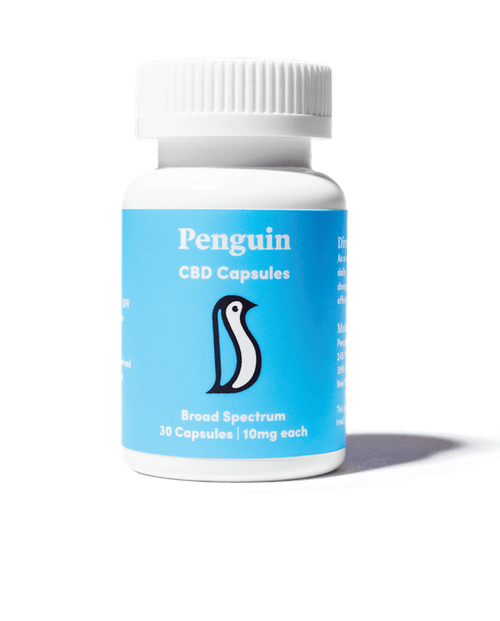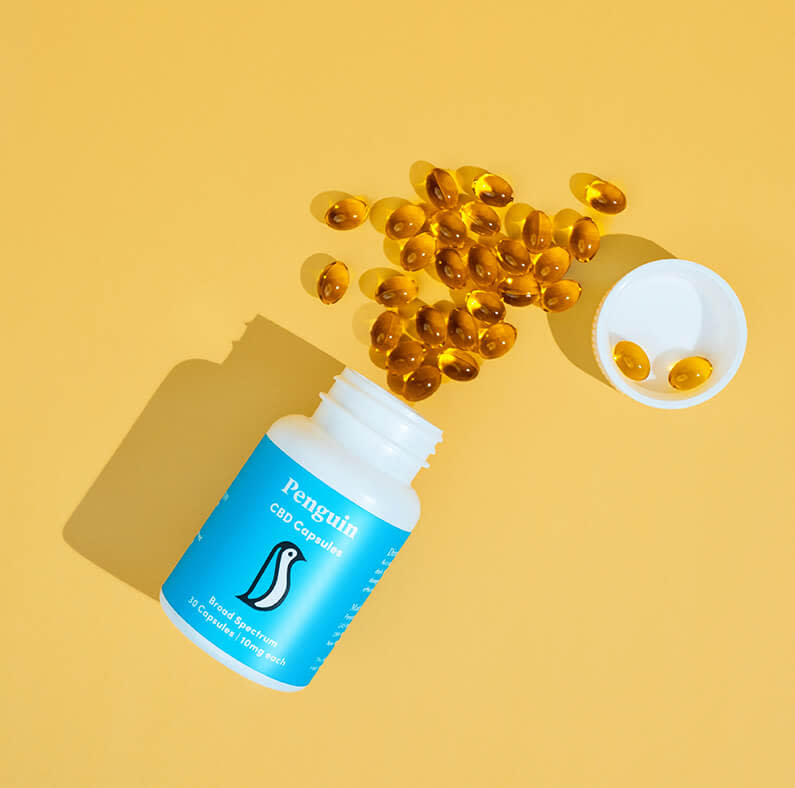Why CO2 Extraction Is the Best for Extracting CBD
 By Penguin CBD
By Penguin CBDWhile you have likely seen many CBD products being advertised by a cornucopia of manufacturers, not all CBD products are of the same quality. Of particular importance, when purchasing a CBD product, is finding out the manufacturer's extraction method to produce the end product sold to consumers.
The different kinds of extraction methods each have their pros and cons, but CO2 extraction is, hands down, the best method. To find out why this extraction process is superior as well as learn other aspects about purchasing a high-quality CBD product such as Penguin’s CBD oil, keep reading- you'll be glad you did!
What Is CBD?
If you happen to be searching up the different methods of extracting CBD, you likely know the basics of CBD, but just in case you're new to CBD, it's worth briefly explaining. With the recent explosion in the number of manufacturers making CBD products, you've probably at least heard of CBD either from a friend, neighbor, or doctor. CBD is a complex subject, but we will not bore you with the unnecessary details; we'll just give you the essential information necessary to understand CBD!
Cannabidiol, or CBD, as it's abbreviated, is a chemical extracted from the hemp plant. This is not the only chemical found in hemp as more than 100 cannabinoids are known to researchers and others responsible for figuring these things out. Cannabinoids are a broad, generalized way of talking about chemicals that come from hemp; actually, phytocannabinoids is a more accurate name as the cannabinoids come from a plant and “phyto” means plant.
There are also cannabinoids made by the human body, often referred to as endocannabinoids. “Endo” means something created within the body. The endocannabinoids, along with the receptors in the body in which they interact, comprise the body's endocannabinoid system. With me so far?
There are currently a lot of research studies that are being conducted to study phytocannabinoids and their potential therapeutic effects. Currently, nothing can be said for sure regarding cannabinoids and what they can or cannot do, although many people are claiming they help with various concerns. That being said, there is a pharmaceutical in the United States that is pure CBD called Epidiolex, used by physicians for the treatment of certain childhood epilepsy disorders.
Let's take a moment to point out that delta-9-tetrahydrocannabinol (THC) is one type of cannabinoid, although it is distinct from cannabidiol. Knowing this helps us make sense of the current legal statuses of various CBD products.
Not All CBD Is the Same
Since there is minimal regulation for CBD products, except for the prescription medication Epidiolex, not all CBD products are manufactured the same or even contain the amounts of cannabinoids advertised to consumers. CBD products have many variations, which consumers have to be savvy in order to get the product they truly desire.
We'll start by explaining the difference between different broad categories of CBD before moving on to the kinds of CBD products you can purchase.
Full-spectrum vs. Broad-spectrum vs. CBD Isolate
Full-spectrum, Broad-spectrum, Isolate...Oh my! For those new to CBD, the distinction between these industry specific terms is imperative for those purchasing CBD for the first time. The terms will make sense after giving the rationale for why they're called what they are and will make it much easier to remember for when you need it.
The full in full-spectrum CBD is used in reference to the cannabinoid content. The full-spectrum CBD product is full of all the cannabinoids that can be legally extracted from the hemp plant. This means that the product has 0.3% THC, cannabidiol, and all the other cannabinoids and terpenes found in the plant.
Why do some CBD experts and many consumers prefer full-spectrum CBD products to either broad-spectrum or CBD isolate products? It's due to what is called the "entourage effect," which basically states that the therapeutic effect of CBD is enhanced, and sometimes new properties emerge when all the cannabinoids are used together. In other words, cannabinoids are considered to have a synergistic effect!
Broad-spectrum CBD products have all the cannabinoids that full-spectrum products have minus the THC. Individuals admittedly opposed to THC or who worry about showing up positive on a urinary drug screen (UDS) may be a better fit for a broad-spectrum product. Proponents of the "entourage effect" often state that THC has a therapeutic effect in CBD products that are absent in broad-spectrum products and isolates, but if you're job’s on the line, it may be an easy choice for you.
CBD isolate products are your bare-bones model of CBD. These products only contain the CBD cannabinoid, no THC, terpenes, flavonoids, or other cannabinoids. These products are more ideal for those that work in public safety jobs, such as doctors or airline pilots, who are frequently drug tested and for which a positive test could cost them their job and career.
So what exactly is THC? Let’s explore.
What is THC?
The controversy about THC comes down to its legal status and the effects we know it produces in the human body. If you don't know already, THC is the chemical in the hemp plants that produces the "high" feeling if you've ever used Marijuana. It is the cannabinoid with the most potent psychoactive properties and is also the chemical frequently tested for in urinary drug screens (UDS).
Currently, THC is classified as a Schedule I substance, which means that there is uncertainty about its beneficial use in medical conditions and the safety surrounding its use. It's a little confusing given there is a pharmaceutical in the US available called Dronabinol, which is used to increase appetite in certain populations and for the treatment of certain kinds of nausea and vomiting.
You may be asking - So wait? Is CBD even legal? Let’s talk about CBD’s legal status.
Legal Status of CBD
Where does the current legal status stand for CBD products? Well, that depends on the amount of THC in the products being sold. The Farm Bill, which was passed in 2018, makes the manufacturing and selling of industrial hemp products federally legally. Industrial hemp is a type of hemp plant but is specifically cultivated to have minimal THC amounts, especially compared to illicit Marijuana plants. According to the Farm Bill, Industrial hemp must contain 0.3% THC or less to be considered legal to sell in all 50 states.
This can be a confusing aspect of CBD as some states have legalized medical and recreational Cannabis use, and in these states, it may be possible to find CBD oil with much higher THC concentrations than 0.3%. Purchasing CBD products off the internet or within a state that does not allow for recreational or medical Cannabis may help safeguard, but not guarantee you from buying high THC containing CBD oil.
Ok, now that we have put down a foundation of understanding CBD, let’s talk about the extraction methods.
Steam Distillation Extraction
One of the oldest methods known and cheapest for extracting chemicals from plant material is steam distillation. The steam distillation process dates back hundreds of years, so it's a tried and tested method for getting reliable extractions. The downside to using this method is that the process is notoriously inefficient, requiring large amounts of plant material, and its precise extraction of cannabinoids is hard to regulate.
Steam distillation extraction happens like the name suggests, using heat and steam. This is how it works! A container with water is heated, causing the formation of vapor, which flows through to another camber that holds the raw hemp plant material. The vapors help pull out the essential oils of the plant, which include the phytocannabinoids.
As you've seen with steam, vapors will rise carrying the essential oils, which will go into a water condensing tube that cools the vapor, causing the steam to convert to a water and an essential oil liquid. The water and essential oil liquid combination undergo a process by which these two substances are separated, ultimately leaving the cannabinoids.
Manufacturers utilizing this method also have to worry about overheating the plant material. Overheating plant material can alter the chemical profile of the cannabinoids, which is not what we want when extracting CBD oil. If this happens, the structure, integrity, and quality of CBD may be compromised.
Solvent Extraction
An arguably less healthy, but more economical option than steam distillation method for extracting cannabinoids from hemp plant material utilizes solvents. These solvents can take the form of hydrocarbons such as naphtha, petroleum, butane, and propane or more natural solvents such as alcohol or olive oil.
Solvent extraction takes the form of a similar process as steam distillation with a few important differences. Instead of water being heated in the first step of steam distillation, a solvent is heated, whether that be a hydrocarbon compound or a natural solvent. Once the solvent has combined with the cannabinoids, the mixture is condensed, separating the hydrocarbon and hydrocarbon byproducts from the final cannabinoid product.
The benefit of using hydrocarbon solvents is that hydrocarbons are more easily separated from the cannabinoids than when using a natural solvent. The downside to hydrocarbons is that they are not natural to our bodies and can cause harmful effects if the hydrocarbon is not entirely separated from the final CBD product, which has been known to happen.
With the risks associated with using hydrocarbons, you may ask yourself why manufacturers don't just use natural solvents. Two problems arise with natural solvents: sometimes, the natural solvents extract more than just cannabinoids from the hemp plant that can leave your CBD product with an unpleasant taste. Secondly, natural solvents are inefficient in pulling out cannabinoids, which can leave a CBD end product with a cannabinoid content less than expected and advertised by the manufacturer.
CO2 Extraction
Now to the holy grail of CBD extraction and the section you've been waiting to read since starting this article! By far, the best way, but the most expensive way to extract cannabinoids from the Cannabis plant, is to utilize a supercritical carbon dioxide (CO2) method. “Supercritical” describes a property inherent to CO2. Basically, it’s the combination of super-low temperatures combined with pressure which causes the CO2 gas to change into a liquid.
Here is how the process works. A tank of carbon dioxide is connected to a supercooled chamber. A pump moves the cooled CO2 liquid into an extraction cell containing the Cannabis plant material. The combination of pressure and temperature of the CO2 affects its solvency, which allows for the effective diffusion and extraction of cannabinoids from raw plant material.
CO2 extraction is very efficient at extracting cannabinoids from the hemp plant; this process also allows manufacturers to control the concentration of cannabinoids that are extracted from the plant by adjusting either the pressure or the temperature of the CO2. This method also leaves behind a pure product of cannabinoids as the CO2 in the cannabinoid-CO2 solution found at the end of the process ends up evaporating as the temperature increases.
With a pure cannabinoid end product, efficient extraction, and the ability to regulate the concentration of cannabinoids, you may be asking yourself why all manufacturers don't use this extraction method. It's because the equipment to perform CO2 extraction is costly, and if you're a savvy, experienced consumer, you know that these costs will ultimately be passed on to the consumer. This is why you may find that CO2 extracted CBD products may cost you a little more, but we can say with confidence that the little extra investment is worth it!
The 10,000 Foot Perspective
Cannabidiol (CBD) is one of many phytocannabinoids derived from the industrial hemp plant. There is a lot of time and money currently being spent researching CBD's potential benefits to humans, although not a lot can be currently stated as a fact. There are three broad categories of CBD products: full-spectrum products, broad-spectrum products, and CBD isolates, which progressively have less variety of cannabinoids.
It would help if you kept in mind there are various ways to extract cannabinoids from the industrial hemp plant, including steam distillation extraction, solvent extraction, and CO2 extraction. All methods have their pluses and minuses, but ultimately CO2 extraction is superior to other methods because of the purity of the CBD end product and the ability to control the concentration of cannabinoids more accurately. That's why we use it for every Penguin CBD product.
If you want to learn more information about how CBD oil is made, check out this article!










